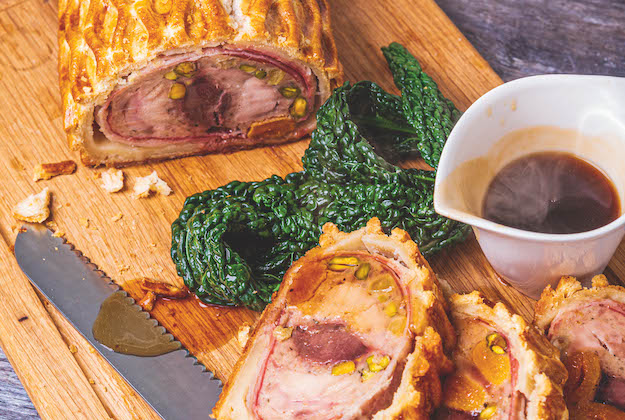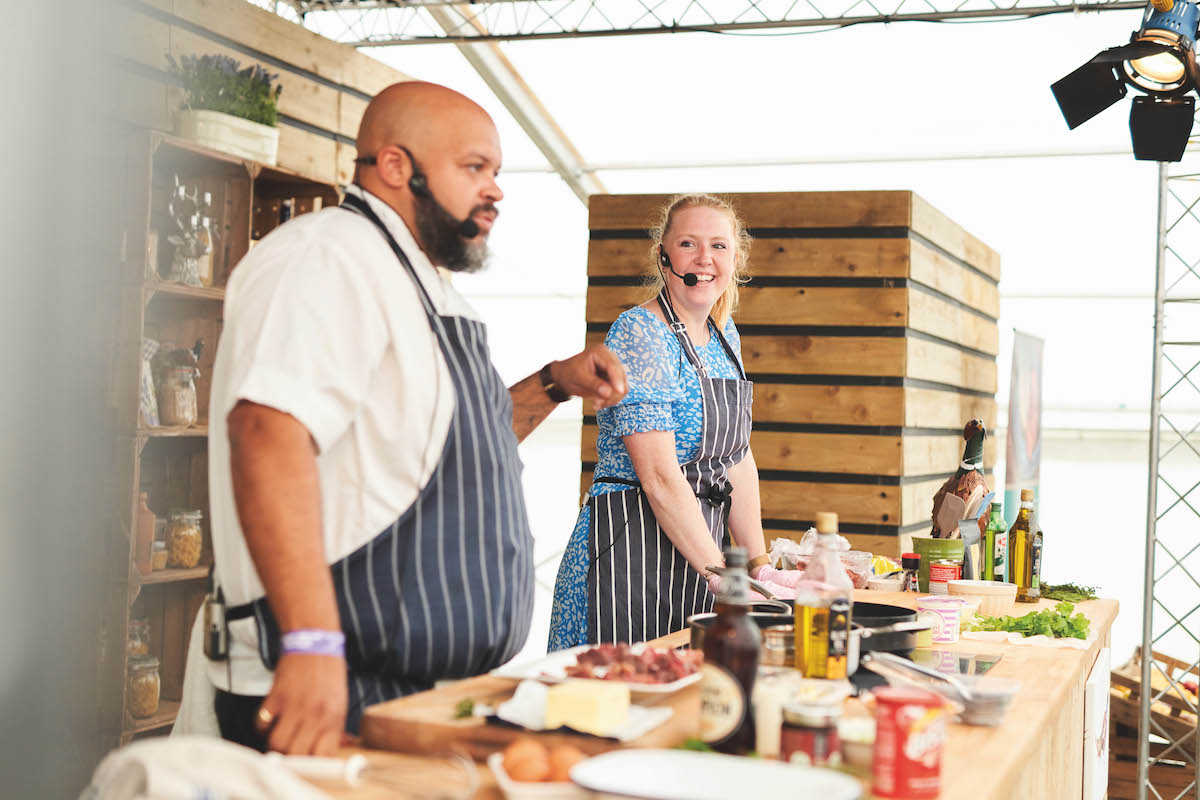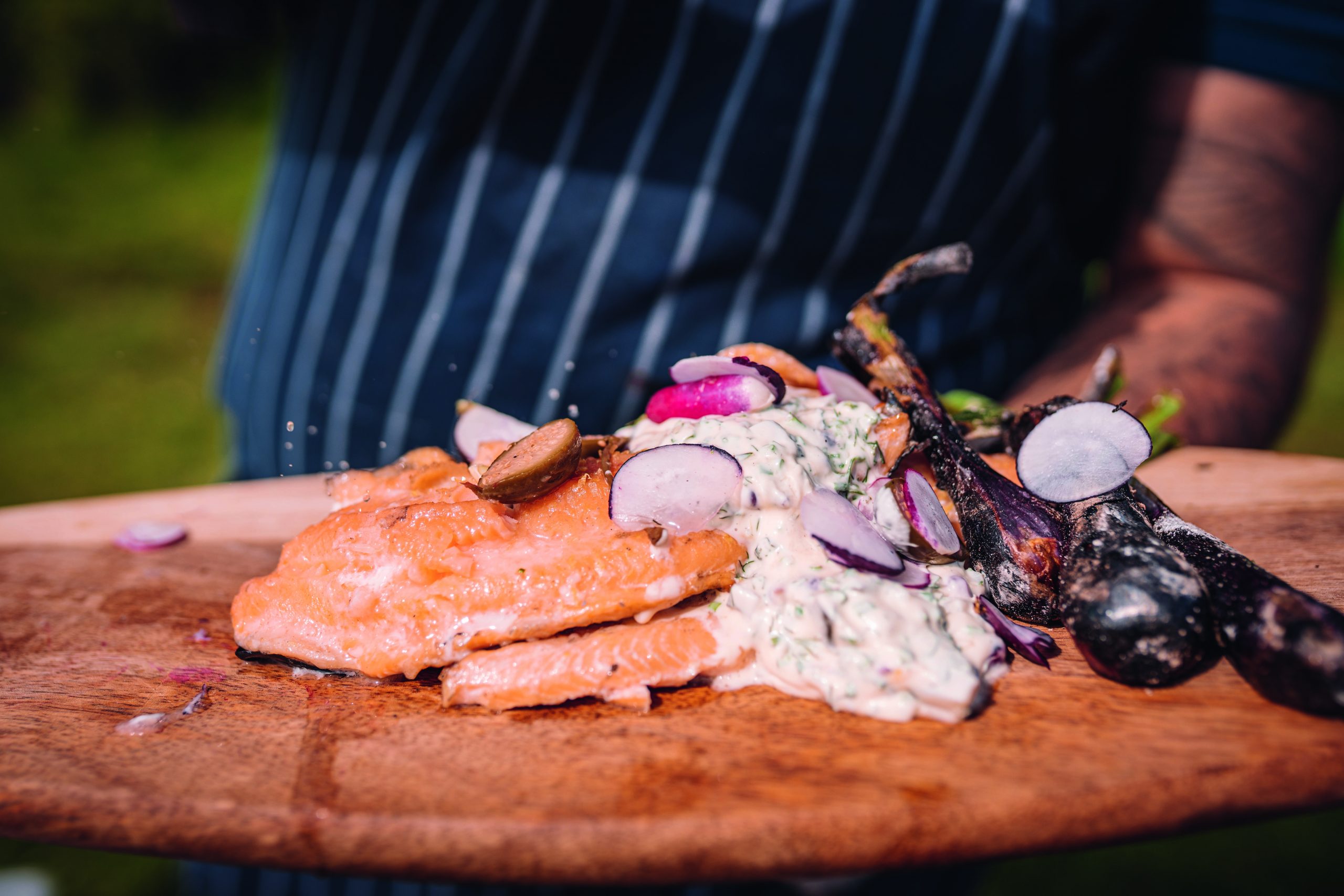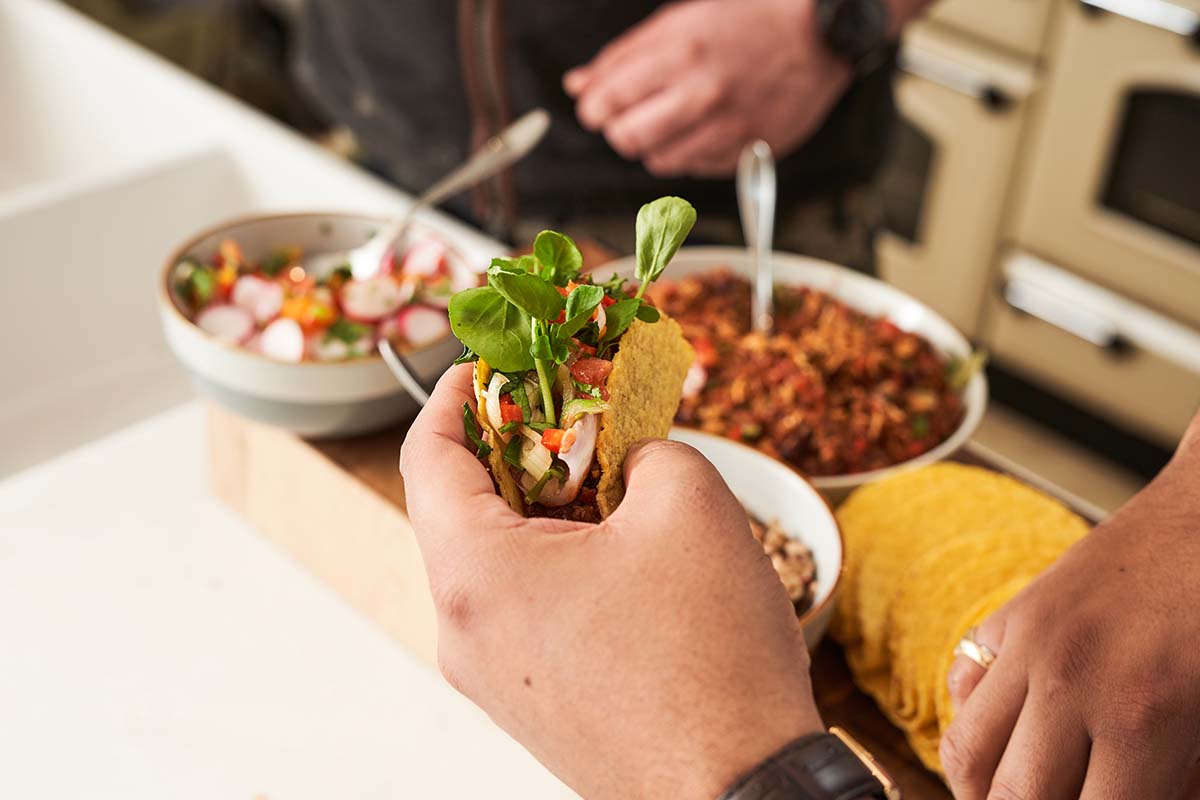Partridge, pigeon and pheasant Wellington
One of the joys of rough shooting is a mixed bag of pheasant, partridge and pigeon — and Jose Souto has a special recipe to showcase all three. Serves ten.

Three bird Wellington
My first experience of rough shooting came with friends in Norfolk on a 2,500-acre farm not far from King’s Lynn. The farm had acres and acres of sugar beet as well as large fields of rape that held pretty much everything you could want to shoot on a day out. Hares, rabbits, pheasants, partridges, pigeon and a selection of duck on the drains that criss-crossed the land. For a chef, this sort of hunting can reap great benefits. It gives you an incredible variety of game to work with and tests your ability to do justice to this fantastic array of ingredients.
On one of my first rough days, I remember a sugar beet field stretching out into the distance as far as I could see. We lined up, spread out over one-third of the field, working two pointers between us. There was something hypnotic about watching the pointers work back and forth, quartering the large field and working up to a point in front of us. I love pointers and have always worked one with my birds. They are not for the faint-hearted as they have incredible stamina and can be headstrong, but they are intoxicating as a companion and a fantastic hunting partner.
Both dogs worked their hearts out and put in point after point, giving us a fine tally of pheasant and partridge for the pot, as well as four pigeon from a small roosting wood at the end of the day. A mixed bag of fresh game but how to use it?
Here is a recipe that uses all three in a dish that will sit proud at a dinner party or after a day’s shooting. I developed this recipe for my friends Simon and Tristan at Lincolnshire Game. We all love it as the sausage meat keeps the three birds moist. Try not to use wet cured or smoked bacon. The smokiness can overpower the game and the added water in the wet-cure bacon makes the pastry wet. It takes a little preparation, but it is well worth it.
Three-bird wellington
Ingredients
- 280g dry-cure streaky bacon (12 long slices)
- 3 Pheasant breasts, skin off
- 260g Cumberland sausage meat
- 20g peeled pistachios
- 90g apricots
- 4 pigeon breasts, skin off
- 4 partridge breasts, skin off
- 1kg puff pastry
- 1 egg
Method
- Lay six of the bacon slices vertically on a large piece of cling film, then lay the other six slices vertically, overlapping it slightly at the top, to make a long rectangle. On the edge of the bacon closest to you, lay the three pheasant breasts, slightly overlapping, across the bacon. Divide the sausagemeat into two lumps. Place the sausage meat individually between two pieces of cling film. Using a rolling pin, roll it so it is the same length as the three pheasant breasts, the same width and about 5mm thick.
- Lay one of the pieces of sausage meat on to the pheasant, sprinkle a few pistachios and apricots on to the sausage meat. Lay the pigeon breasts on to this, overlapping them, followed by the second piece of sausage meat, more pistachios and apricots, and finally the partridge breasts, again overlapping. Roll the whole thing up, wrapping the bacon around the breast and sausage meat. Wrap it in cling film, twisting the ends and tucking them under. Put in the fridge for 20 minutes.
- Roll out a piece of puff pastry 3mm to 4mm thick. This must be long enough to go around the meat, overlapping by 2cm underneath, and be 5cm wider than the ends of the joint. Brush the top end and along the edge either side with a little water to help it seal. Lay the pastry on to a piece of cling film. Take the meat out of the cling film and place it on to the edge of the pastry, with the bacon joint at the bottom. Make sure it is centred. Grab the cling film either side of the bottom edge of the pastry.
- Keeping it pulled taut, lift the cling film and the pastry wrap. Gently roll the meat forward until it is encased in pastry. Tighten the roll and seal the dough around each end of the meat. If any air is trapped in the pastry, pierce the air pocket with a small knife. Unroll from the cling film and tuck under any bits at the ends.
- Lay the pastry-covered joint on a well-greased tray, with the seal on the bottom. Brush with egg wash. Roll out another piece of puff pastry for the lattice, again long enough to cover the joint. Roll to 3mm thick and then roll a lattice cutter along it. Carefully lift the pastry lattice and place over the joint. Open out the lattice and then trim off any excess pastry. Egg wash the lattice.
- Using the tip of a knife, make three small holes at the base along each side of the joint, to allow any juices to escape. Place into a preheated oven at 180°C for 30 minutes, then turn up to 200°C for a further 15 minutes. Using a digital thermometer, check the centre of the meat has reached 68°C. Allow it to rest for 10 minutes before cutting.








